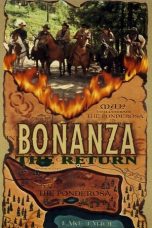- Source: Cart
- Source: CART
A cart or dray (Australia and New Zealand) is a vehicle designed for transport, using two wheels and normally pulled by draught animals such as horses, donkeys, mules and oxen, or even smaller animals such as goats or large dogs.
A handcart is pulled or pushed by one or more people.
Over time, the word "cart" has expanded to mean nearly any small conveyance, including shopping carts, golf carts, go-karts, and UTVs, without regard to number of wheels, load carried, or means of propulsion.
History
The history of the cart is closely tied to the history of the wheel. Carts have been mentioned in literature as far back as the second millennium B.C. The first people to use the cart may have been Mesopotamians or early Eastern Europeans, such as the Yamnaya Culture (See history of the wheel for more information). Handcarts pushed by humans have been used around the world.
Carts were often used for judicial punishments, both to transport the condemned – a public humiliation in itself (in Ancient Rome defeated leaders were often carried in the victorious general's triumph) – and even, in England until its substitution by the whipping post under Queen Elizabeth I, to tie the condemned to the cart-tail (the back part of a cart) and administer him or her a public whipping. Tumbrils were commonly associated with the French Revolution as a mobile stage elevating the condemned on the way to the guillotine: this was simply a continuation of earlier practice when they were used as the removable support in the gallows, before Albert Pierrepoint calculated the precise drop needed for instant severance of the spinal column.
Ancient carts
Human-powered carts
Of the cart types not animal-drawn, perhaps the most common example today is the shopping cart (British English: shopping trolley), which has also come to have a metaphorical meaning in relation to online purchases (here, British English uses the metaphor of the shopping basket). Shopping carts first made their appearance in Oklahoma City in 1937.
In golf, both manual push or pull and electric golf trolleys are designed to carry a golfer's bag, clubs and other equipment. Also, the golf cart, car, or buggy, is a powered vehicle that carries golfers and their equipment around a golf course faster and with less effort than walking.
A Porter's trolley is a type of small, hand-propelled wheeled platform. This can also be called a baggage cart.
Autocarts are a type of small, hand-propelled wheeled utility carts having a pivoting base for collapsible storage in vehicles. They eliminate the need for plastic or paper shopping bags and are also used by tradespersons to carry tools, equipment or supplies.
A soap-box cart (also known as a billy cart, go-cart, trolley etc.) is a popular children's construction project on wheels, usually pedaled, but also intended for a test race. Similar, but more sophisticated are modern-day pedal cart toys used in general recreation and racing.
The term "go-kart" (also shortened as "kart", an alternative spelling of "cart"), has existed since 1959, and refers to a tiny race car with a frame and two-stroke engine. The old term go-cart originally meant a sedan chair or an infant walker.
Other carts:
Rickshaw: Transport for humans.
Pushcart: a cart that is pushed by one or more persons.
AV cart: a cart used to traditionally used to transport audiovisual equipment such as televisions. In more recent years, has been used as a standing desk, especially in school administration.
Baggage cart: pushed by travelers to carry individual luggage
Serving cart: also known as pushcart or go-cart, is a handcart used for serving:
Food cart: a mobile kitchen that is set up on the street to facilitate the sale and marketing of street food to people from the local pedestrian traffic.
Food service cart: also named serving trolley, for serving the food in a restaurant
Pastry cart: for serving pastry
Tea cart: also named teacart or Chai Cart, tea trolley and tea wagon, for serving tea or other drinks
Human-powered carts
Animal-powered carts
Larger carts may be drawn by animals, such as horses, mules, and oxen. They have been in continuous use since the invention of the wheel, in the 4th millennium BC. Carts may be named for the animal that pulls them, such as horsecart or oxcart. In modern times, horsecarts are used in competition while draft horse showing. A dogcart, however, is usually a cart designed to carry hunting dogs: an open cart with two cross-seats back to back; the dogs could be penned between the rear-facing seat and the back end.
The term "cart" (synonymous in this sense with chair) is also used for various kinds of lightweight, two-wheeled carriages, some of them sprung carts (or spring carts), especially those used as open pleasure or sporting vehicles. They could be drawn by a horse, pony or dog. Examples include:
Cocking cart: short-bodied, high, two-wheeled, seat for a groom behind the box; for tandem driving: 53
Dogcart: light, usually one horse, commonly two-wheeled and high, two transverse seats set back to back: 66
Donkey cart: underslung axle, two lengthwise seats; also called pony cart, tub-cart
Float: a dropped axle to give an especially low load bed, for carrying heavy or unstable items such as milk churns. The name survives today as a milkfloat.: 79
Governess cart: light, two-wheeled, entered from the rear, body partly or wholly of wickerwork, seat for two persons along each side; also called governess car, tub-cart: 88
Ralli car: light, two-wheeled, horse-drawn, for two persons facing forward, or four, two facing forward and two rearward. The seat is adjustable fore-and-aft to keep the vehicle balanced for two or four people.: 139
Stolkjaerre: two-wheeled, front seat for two, rear seat for the driver; used in Norway: 155
Tax cart: spring cart, formerly subject to a small tax in England; also called taxed cart: 160
Whitechapel cart: spring cart, light, two-wheeled, especially for family or light delivery service: 173
The builder of a cart may be known as a cartwright; the surname "Carter" also derives from the occupation of transporting goods by cart or wagon.
Carts have many different shapes, but the basic idea of transporting material (or maintaining a collection of materials in a portable fashion) remains. Carts may have a pair of shafts, one along each side of the draught animal that supports the forward-balanced load in the cart. The shafts are supported by a saddle on the horse. Alternatively (and normally where the animals are oxen or buffalo), the cart may have a single pole between a pair of animals. The draught traces attach to the axle of the vehicle or to the shafts. The traces are attached to a collar (on horses), to a yoke (on other heavy draught animals) or to a harness on dogs or other light animals.
Traces are made from a range of materials depending on the load and frequency of use. Heavy draught traces are made from iron or steel chain. Lighter traces are often leather and sometimes hemp rope, but plaited horse-hair and other similar decorative materials can be used.
The dray is often associated with the transport of barrels.: 68
Horse-drawn carts
Other animals
See also
References
External links
Organizations
Canada Agricultural Review Tribunal, a Canadian regulatory appellate tribunal
Center for Advanced Research and Technology, a high school in Clovis, California
Centre for Appropriate Rural Technology, South Africa
Championship Auto Racing Teams, a now-defunct sanctioning body for American open-wheel car racing
Christian African Relief Trust, a British aid organisation
Coleshill Auxiliary Research Team, British historical research group
Computer Analysis Response Team, a Federal Bureau of Investigation working group
Science
Chimeric antigen receptor T cell
Classification and regression tree, a type of decision tree
Cocaine- and amphetamine-regulated transcript, a neuropeptide
Combination antiretroviral therapy, a type of treatment for HIV/AIDS
Torulene dioxygenase, an enzyme
Technology
Communication access real-time translation, a speech-to-text conversion system
Transport
Clermont Area Rural Transit, now Clermont Transportation Connection
Cleveland Area Rapid Transit
Other uses
CART, abbreviation for Churchie Art, an annual exhibition at Anglican Church Grammar School, Brisbane, Australia
See also
Cart (disambiguation)
Kata Kunci Pencarian:
- Championship Auto Racing Teams
- Pocono Indy 500
- CART musim 1993
- Mṛcchakatika
- CART musim 1995
- Jacob Cart
- Cart (film)
- Quick.Cart
- CART musim 1997
- CART musim 2000
- Cart
- CART
- Carting
- Shopping cart
- Billy cart
- Cart (disambiguation)
- Golf cart
- Halal cart
- Cart Narcs
- J-Cart
- 1
- 2
2 Fast 2 Furious (2003)
X-Men (2000)
Ghostbusters (1984)
The Count of Monte-Cristo (2024)
No More Posts Available.
No more pages to load.













